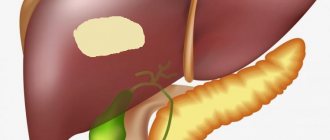Many older women come across the term “serozometra”. This is not a diagnosis, but a condition that is characterized by the accumulation of serous fluid in the uterus. It becomes a consequence of gynecological diseases or previous operations. Fluid can accumulate in the uterus for a number of reasons, so a serozometer requires careful diagnosis. In each specific case, treatment is selected individually. What kind of disease is this, what are the causes, signs in menopausal and postmenopausal women.
Serozometra: what is it in women?
Serozometra is a combined concept that denotes the presence of fluid in the uterine cavity, which, in fact, is not a diagnosis. The accumulation of serous fluid in the uterus is a nonspecific manifestation of a number of diseases accompanied by increased secretion or impaired outflow of exudate into the vagina.
It occurs more often during postmenopause against the background of involutive processes in the female genital organs and is diagnosed in 40% of patients in this group during gynecological ultrasound. Moreover, most often such a disorder is detected in women with a postmenopausal duration of 15 to 25 years. The appearance of intrauterine fluid in patients of reproductive age, as a rule, has other causes than serozometra in postmenopause, and requires a quick, thorough differential diagnosis.
What happens if serozometra occurs in the uterus:
- Between the muscular tissue of the uterus and the endometrium there is a so-called serous membrane (a film of connective tissue), penetrated by many capillaries. Transparent yellowish blood plasma leaks through the walls of these tiny vessels. This is the serous fluid.
- If a woman has scars on the cervix or other defects that prevent the removal of fluid from the cavity, then it accumulates and stagnates.
- Obstacles to the removal of accumulated contents of the uterine cavity may arise as a result of previous gynecological diseases, operations on the uterus, the formation of fibroids, or malignant tumors.
- The consequences of such processes can be atrophy of the mucosa, narrowing or fusion of the tissues of the cervical canal. In a more complex case, fluid also accumulates in the cervical canal. The so-called serozocervix occurs.
general description
By serometra, or serosocolpos of the endometrium, doctors mean stagnation of fluid in the uterine cavity. It must be remembered that uterine serometra is not a diagnosis, it is only a functional medical definition of the disease. Most often, pathology appears in the patient’s medical history after an ultrasound of the uterus, which reveals the presence of fluid inside the examined organ.
There is fluid in the uterus in old age or in mature women. Taking into account statistics, the serosometer of the uterus in menopause is determined by ultrasound diagnosis in approximately 45% of patients.
Serous fluid accumulates inside the uterus if the passage of free water through the cervical canal, which is located deep in the uterus and connects the internal and external genitalia, is disrupted.
Serozocervix is a complication of serozometra in postmenopause. By and large, this is a process of inflammation in the cervix, which is provoked by a disruption in the functioning of its cervical canal. In this case, water begins to linger inside the uterus, and serozometra develops. Taking into account the age of women, the functioning of the cervical canal is very often disrupted.
Reasons for development
Women of post-menopausal age are susceptible to serozometra. The reasons for the development of this pathology may be:
- Hormonal imbalance as a result of menopause;
- Endometriosis is a disease in which cells in the inner layer of the uterine wall grow outside of it. In this case, serous fluid accumulates in cavities inside the walls of the organ;
- Inflammation as a result of infectious processes of the pelvic organs;
- Complication after surgery. When the walls of the uterus are injured, serous effusion with inclusions of blood accumulates in the organ cavity;
- Ectopic pregnancy;
- Tumor processes occurring in the pelvic organs;
- Adhesions and scars form cavities in the uterus in which fluid accumulates.
Most often, the problem is detected in women after 60-70 years of age in postmenopause against the background of involutive changes in the mucous membrane. Up to 1/3 of patients of this age encounter a serozometer at least once. In girls and women from other age groups, the pathology is quite rare and requires an immediate search for causes and treatment.
Provoking factors
Serozometra in gynecology is not always found in elderly women. In the development of pathology, in addition to physiological reasons, factors independent of the body play a large role. Doctors note that the threat of uterine serozometra increases significantly if:
- there is alcohol addiction and other bad habits, for example, smoking - even 1 cigarette a day is dangerous;
- had a promiscuous sex life with a constant change of partners;
- undergone numerous abortive interventions;
- there were operations on the reproductive organs;
- hormonal drugs have been used for a long time without prior consultation with a doctor - this threatens the rapid development of serozocervix during the postmenopausal period.
Serometra in menopause is dangerous. If the pathology is not diagnosed in a timely manner and appropriate therapy is not selected, there are often cases of the development of oncological processes, which in old age are difficult to tolerate and in most cases end in death.
Methods for preventing the disease
There are no special methods for preventing the pathology in question. To prevent gynecological diseases, a woman should adhere to the following tips:
- Lead an active lifestyle, do exercises.
- Eat right and get plenty of rest.
- Try to eliminate stress.
- To refuse from bad habits.
- Have a selective sex life.
- Maintain intimate hygiene.
- Treat acute and chronic infectious and inflammatory diseases in a timely manner.
- Perform preventive gynecological examinations at least once a year.
Due to the fact that the disease in question develops, as a rule, during the postmenopausal period, a woman needs to regularly visit a doctor at least twice a year.
This will help to promptly identify and begin treatment of certain pathologies and prevent possible complications. We wish you good health and good luck.
Signs of serozometra in the uterus
In most cases, the problem is detected by ultrasound. Serozometra most often manifests itself with the following symptoms:
- An increase in the size of the uterus, which is caused by a large amount of fluid in its cavity. This is usually determined by a gynecologist during a palpation examination. But there have been cases when the woman herself felt an enlargement of the uterus due to a large volume of fluid accumulated in its cavity.
- Dysfunction of organs that are located nearby. For example, due to an increase in the size of the uterus, problems with urination or bowel movements may occur.
- Dull and nagging pain in the lower abdomen, which intensifies during sexual intercourse. Uncharacteristic discharge.
- Menstrual irregularities.
But, all these symptoms are characteristic of many other gynecological problems. Therefore, serometrosis can only be detected by a doctor during an ultrasound examination.
Serozometra (anterior and posterior walls of the uterus + cavity dilated by fluid)
Serozometra can only be detected through careful diagnosis. A woman can independently pay attention to the following warning signs:
- Constant pain in the lower abdomen. The more fluid accumulates in the uterus, the more it enlarges, and the more intense the pain.
- Pain and discomfort during sex. During sexual intercourse, the usual nagging pain becomes more intense.
- An enlarged abdomen, also associated with an increase in the size of the uterus. In particularly severe cases, the uterus can become so enlarged that the woman appears pregnant.
- Problems with urination and difficulty defecating. Both symptoms are due to the fact that the enlarged uterus puts pressure on other organs, causing damage to the bladder and rectum.
- Frequent and copious grayish discharge. Despite the fact that most of the fluid cannot leave the uterine cavity, some amount of secretion still comes out as secretions. They become especially noticeable and intense after sex.
- Constantly elevated temperature. It is usually minor, but lasts for a long time.
If such symptoms appear, you should immediately consult a doctor and undergo an examination.
Signs and symptoms of serosometers
At the initial stage, serozometra in postmenopause can only be detected using ultrasound, since the symptoms that appear are characteristic not only of this gynecological disease. Women usually go to the doctor when they notice that their belly has begun to grow, as if they were pregnant. This occurs due to the fact that the accumulating fluid stretches the uterus, increasing its volume.
The following serosometer symptoms appear:
- nagging pain in the lower abdomen;
- copious liquid vaginal discharge of a yellowish-gray color;
- periodic increase in body temperature;
- pain and difficulty urinating (due to pressure on it from the increasing size of the uterus);
- painful sensations during sexual intercourse.
A woman's belly can reach the same size as in the last months of pregnancy.
Video: Using ultrasound in gynecology
Serozometra in menopause
Menopause in the majority (70%) of women occurs at 50–52 years of age, however, it is impossible to determine clear age criteria for the menopause phases, since it is characterized by individual characteristics.
Menopause is the shortest phase of menopause. True menopause is the last independent (if hormones that affect menstruation are not used) menstruation. As a rule, menopause begins with menstrual irregularities, when menstruation loses its usual rhythm and is often delayed for a long time. In such conditions, it is difficult to determine which menstruation is the last, so it is generally accepted that if the next menstruation does not come within a year, the woman has entered menopause. Some experts set this period at two years.
During menopause and especially menopause, the female body experiences a serious deficiency of estrogen, as the ovaries stop synthesizing them. Since the reproductive function is not performed by the ovaries, the body gradually modifies the genital organs and tissues. The endometrium is no exception. Losing the necessary estrogenic influence, it becomes thinner, loses its natural protective properties, and its ability to regenerate weakens.
The most common cause of serozometra in menopause is the developing atresia (narrowing) of the internal pharynx, which is not a pathology in this period. Symptoms of serozometra in menopause differ little from those in women of the reproductive period.
Reviews
Irma, 34 years old
I was diagnosed with grade 1A serosometrium. Afterwards, the gynecologist prescribed a course of treatment with Actovegin, Curantil and Chofitol. I can’t say that there was no effect, it was just small. I noticed the effectiveness of the treatment after 10 sessions in the pressure chamber. After therapy, I quickly recovered and managed to get pregnant. She gave birth to a healthy baby at exactly 40 weeks.
https://youtu.be/qqBR_7hVDnI
Snezhana, 40 years old
She complained of pain in the pubic area. After undergoing tests and an ultrasound, the gynecologist said “...you have a grade 1B serosometer...”. I immediately panicked, I thought that I would never recover. But, after drips in the hospital, the situation improved slightly to 1A. While I am seeing a doctor, I am not taking any medications.











